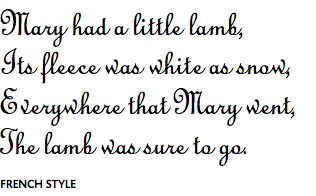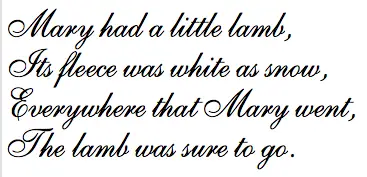During the Victorian era (1837 – 1901), Victorian penmanship, basically cursive handwriting, was very essential. It was almost mandatory for each and every person to have his or her handwriting practice, may it be in school or at home. Penmanship, or the art of writing by hand, was a skill that Victorian people pride themselves with since their primary mode of communication is writing letters.
Obviously, Internet and computers were non-existent during the Victorian era. This follows the unavailability of any digital machine to produce automated fonts, delete options and spelling checks. Therefore, Victorian penmanship required extensive handwriting practice both for accuracy and readability.
Such limitation in communication required letters to be written neatly as to be easily understood if they were to be sent to families and friends from another part of the British Empire. Usually, a successful letter delivery took months. Hence, legible handwriting ensured that the contents of the letter would endure its way towards its addressee.
The penmanship during the Victorian times was called Copperplate. It is a neat, round and usually cursive writing done with a metal Quill pen and ink. Children would also dedicate a lot of their time both in school and at home practicing cursive handwriting for kids. As a result, towards the end of the Victorian era, most children had learned how to perform cursive writing appropriately.
There were different types of copperplate penmanship, such as: French Style, Palace Style and Edwardian Style. Most of these cursive handwritings further developed during the Edwardian Era, or the period right after the Victorian Era.

As a type of Copperplate cursive writing, French Style penmanship was both neat and round. Capital letters were cursively intricate and lovely, as they mostly followed the S-shaped line of beauty.

Palace Style penmanship was rather a slanted cursive handwriting. Unlike French style, the letters were more pointed, especially on the letter’s ascender. Its emphasis on down strokes was also apparent. Capital letters, however, maintained the intricate round beauty similar to French Style.

Edwardian style penmanship was much more closely similar to Palace Style compared to French Style. However, as it has developed further during the Edwardian Era, more complicated expressions towards cursive writing were to be seen.
Comparing few letters from the three- mentioned Victorian penmanship, let’s say the letter “M”, cursive handwriting development can be instantly noticed. The Edwardian Style appeared to be more of the contemporary handwriting style compared to the French Style.
Overall, all of these examples continue to highlight the copperplate’s nature of being neat and round, which was necessary during the Victorian Era.
Today, with all the digital automated fonts available, learning the Victorian penmanship is not going to be an easy task. The best way to learn this is to grab a copybook containing Victorian 18th-century handwriting and to engage oneself to dedicated handwriting practice.
